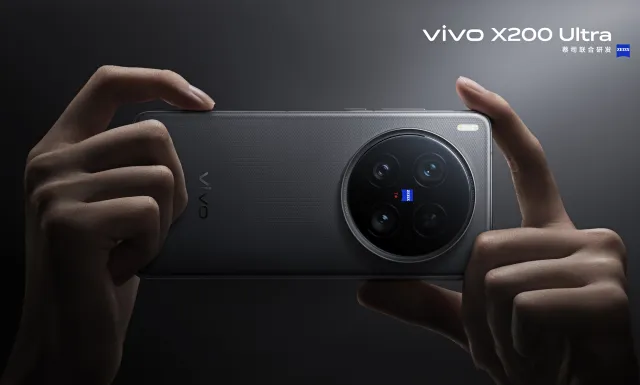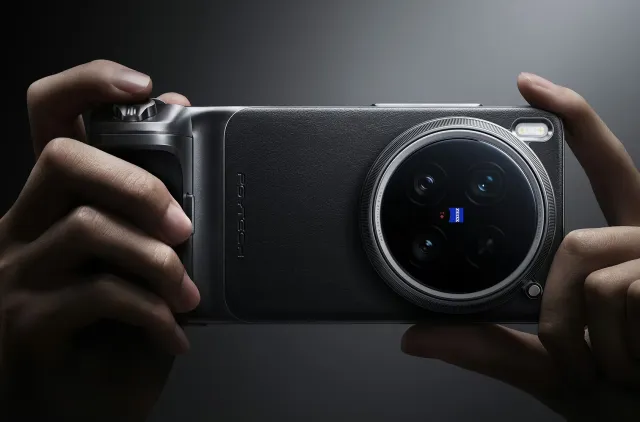An optional Photographer Kit adds a removable grip and a telephoto lens with an 8.7x zoom.
After weeks of suspenseful teasers, Vivo has finally pulled the curtain back on its latest flagship smartphone: the X200 Ultra. Set to launch exclusively in China for now, the X200 Ultra isn’t just another high-end Android phone—it’s an ambitious attempt to blur the lines between smartphones and professional cameras. With cutting-edge hardware, pro-level photography tools, and a camera-centric design, Vivo is making a bold statement: maybe you really can leave your standalone camera at home.
A Powerhouse Under the Hood
At its core, the Vivo X200 Ultra is a technological beast. Powered by Qualcomm’s latest Snapdragon 8 Elite processor, it offers configurations of up to 16GB of RAM and a whopping 1TB of internal storage—more than enough for heavy multitasking, gaming, and of course, storing massive photo and video libraries.
The display is equally impressive, featuring a 6.82-inch OLED screen that promises vivid colors, deep blacks, and crisp details. It also comes equipped with a 90W fast-charging system (via USB-C) and supports up to 40W wireless charging, ensuring that the device is as convenient to use as it is powerful.
Other high-end features include:
- Under-display fingerprint sensor
- IP68-rated water and dust resistance
- Color options: Silver, Red, and Black
A Camera Setup That Demands Attention

Where the X200 Ultra truly stands out is in its rear triple-camera array, which combines both hardware sophistication and software wizardry to deliver a serious photography experience. Even without any additional accessories, the phone is engineered to impress:
- Main and wide-angle sensors: Two 50-megapixel 1/1.28-inch Sony sensors, both equipped with optical image stabilization (OIS). One pairs with a 14mm f/2.0 wide-angle lens for expansive shots, while the other features a 35mm f/1.69 lens ideal for portraits and shallow depth-of-field photography.
- Telephoto zoom: A standout 200-megapixel 1/1.4-inch Samsung HP9 sensor, attached to an 85mm f/2.27 telephoto zoom lens with macro and stabilization support.
- Front camera: A crisp 50-megapixel selfie shooter, perfect for high-res vlogs or studio-quality video calls.
All rear cameras support 10-bit 4K video at 60fps, with slow-motion recording up to 4K/120fps. The results are cinematic in quality—sharp, vibrant, and deeply detailed.
Behind the Scenes: Smart Image Processing
Helping deliver this visual excellence are two newly developed imaging chips:
- VS1: Handles RAW data processing straight from the camera sensors, preserving image detail and accuracy.
- V3+: Takes over for post-processing duties, applying filters, color correction, and other enhancements with speed and precision.
Additionally, Vivo has integrated an enhanced shutter button on the phone—similar to Apple’s iPhone 16 “Camera Control” feature—that allows users to adjust exposure and zoom by simply sliding their finger across the button, making real-time adjustments more intuitive and professional.
Enter the Photographer Kit: A Smartphone That Handles Like a DSLR

If the standard X200 Ultra wasn’t already impressive, the optional Photographer Kit is where things really start to feel revolutionary. Available for an additional 2,598 yuan (around $356) or as part of a 9,699 yuan ($1,329) bundle with the 16GB/1TB version, this add-on transforms the phone into a veritable DSLR substitute.
Here’s what the kit includes:
- Ergonomic camera grip: Adds a dedicated video record button, a customizable settings dial, zoom control, and a shoulder strap—offering improved control and stability during shooting.
- Extended battery life: Includes a 2,300mAh battery that supplements the phone’s already generous 6,000mAh battery, giving you hours of additional shooting time.
- Zeiss 2.35x telephoto converter lens: Mounts via an adapter to the rear camera, boosting zoom from 3.7x to an impressive 8.7x, opening new creative possibilities.
While Vivo hasn’t disclosed how much extra weight the Photographer Kit adds to the 232-gram device, the ergonomics and usability enhancements are undeniable.
Is It Really a Camera Replacement?
Despite the buzz, it’s important to keep expectations grounded. While the X200 Ultra is one of the most photography-focused smartphones ever released, its sensor sizes still fall short of modern DSLR and mirrorless cameras. This means that for serious low-light photography, ultra-wide dynamic range, and interchangeable lens flexibility, traditional cameras will still be the go-to choice for professionals and many enthusiasts.
That said, Vivo is clearly betting on a future where smartphone photography dominates casual and even some semi-pro use cases. If they expand their ecosystem with more add-on lenses, filters, and shooting tools, the X200 Ultra could eventually serve as a true camera alternative for travelers, vloggers, content creators, and mobile-first photographers.
Final Thoughts: The Future of Mobile Photography?
Vivo’s X200 Ultra doesn’t just push boundaries—it redraws them. With its pro-grade camera specs, sleek design, and modular Photographer Kit, this phone is built for creatives who want to shoot on the go without compromising quality. While it may not fully replace a dedicated camera for everyone, it comes closer than any smartphone before it.
For now, the X200 Ultra remains exclusive to China, but its arrival signals a broader trend: the rise of hybrid devices that challenge traditional gear in both performance and versatility. Whether you’re a casual shooter or a mobile content creator, this might just be the most exciting phone of 2025.










